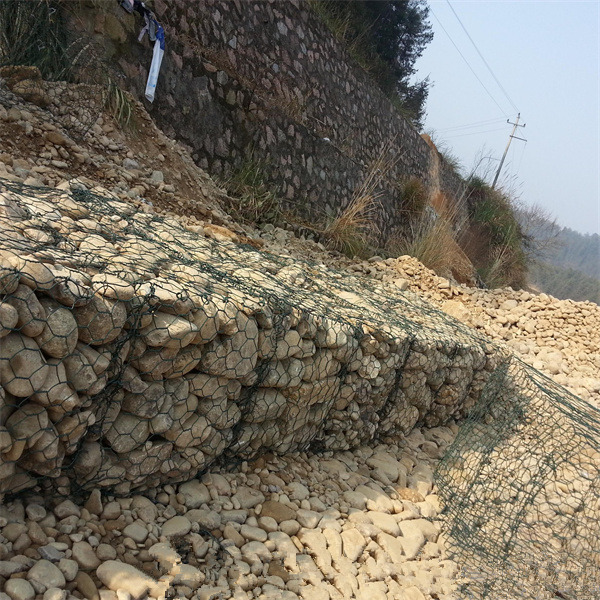డిసెం . 04, 2024 19:17 Back to list
Understanding the Concept and Uses of Gabion in Modern Engineering
Understanding Gabion Meaning and Significance
In the realm of construction and civil engineering, there are several terms and materials integral to the development of infrastructure. One such term is gabion, which has gained attention for its versatility and practicality in various applications. A gabion, derived from the Italian word gabbione, meaning big cage, refers to a wire mesh container filled with rocks, concrete, or other suitable materials. They are typically used for various purposes such as erosion control, retaining walls, and decorative landscaping.
The Structure of Gabions
Gabions are commonly made from heavy-duty wire mesh that is either galvanized or PVC-coated for added durability and resistance to corrosion. The mesh is shaped into boxes or cages that are then filled with locally sourced stones or materials. The size and type of stones can vary depending on the intended use of the gabion. Typically, larger rocks are used for erosion control applications, while smaller, more uniform stones might be used for decorative purposes.
The ability to fill these cages with whatever materials are readily available makes gabions a cost-effective solution. They can be constructed on-site with minimal effort, significantly reducing transportation costs and environmental impact. Furthermore, their modular nature allows for easy scalability, which means they can be adapted to different project sizes or reconfigured as needed.
Applications of Gabions
1. Erosion Control Gabions are extensively used in civil engineering to combat soil erosion. When placed along riverbanks or shorelines, they provide a sturdy barrier against the forces of water that can erode soil. By absorbing the impact of waves and turbulent currents, gabions help in stabilizing the banks and protecting landscapes from degradation.
2. Retaining Walls Another significant application of gabions is in the construction of retaining walls. Retaining walls made from gabions allow for effective management of soil levels in sloped areas. They provide structural support while allowing water to pass through, reducing hydrostatic pressure behind the wall, which can lead to failure in traditional retaining wall systems.
gabion meaning in english

3. Landscaping In landscaping, gabions are valued not only for their functionality but also for their aesthetic appeal. They can be used as garden retaining walls, raised planters, or even as unique outdoor furniture pieces. The natural stones used in gabion construction can complement any landscape, adding texture and visual interest.
4. Flood Control Gabions can also be employed in flood control strategies. By constructing gabion dams or barriers, engineers can divert excess water away from at-risk areas. The porous nature of gabions allows water to flow through while retaining sediment and debris, which helps mitigate flooding effects.
5. Sound Barriers In urban environments, gabions can serve as effective sound barriers. When filled with heavy stones, these structures can absorb and deflect sound waves, reducing noise pollution in nearby residential areas.
Environmental Benefits
Beyond their structural and aesthetic advantages, gabions also offer significant environmental benefits. They blend harmoniously with natural landscapes, fostering wildlife habitats when plants begin to colonize the gaps. Unlike concrete structures, gabions can promote vegetation growth due to their permeability, leading to natural filtration of stormwater and improved water quality.
Moreover, they are recyclable and can be repurposed easily when no longer needed, reducing landfill waste. The use of locally sourced materials aligns with sustainable practices, minimizing the carbon footprint associated with transport and manufacturing.
Conclusion
Gabions represent a remarkable fusion of practicality and sustainability in engineering and landscaping. Their diverse applications, from erosion control to decorative elements, showcase their flexibility and adaptability in various environments. As society continues to confront challenges such as climate change and urbanization, the significance of gabions in providing durable, environmentally-friendly solutions is likely to grow. Understanding gabions, their meaning, and their implications is not just important for engineers and builders, but for anyone interested in sustainable development and effective land management practices. As we delve into future infrastructure projects, the role of gabions will undoubtedly continue to be pivotal in shaping resilient and functional landscapes.
-
Understanding Load-Bearing Capacity of Gabion Boxes
NewsJul.17,2025
-
The Importance of Corrosion-Resistant Wire in Gabion Construction
NewsJul.17,2025
-
How Gabion Boxes Prevent Soil Erosion Effectively
NewsJul.17,2025
-
Environmental Benefits of Gabion Cages
NewsJul.17,2025
-
Best Stone Types for Gabion Walls with Steps
NewsJul.17,2025
-
Benefits of Using Rock Gabion Baskets in Landscaping
NewsJul.17,2025
-
The Role of Galvanized Gabion Mesh in Riverbank Protection
NewsJun.26,2025






